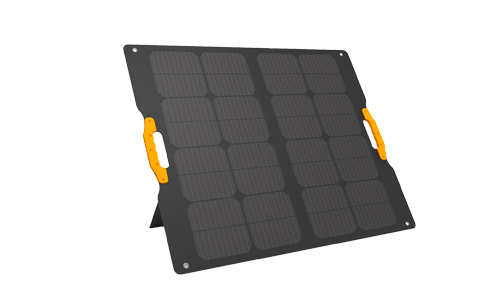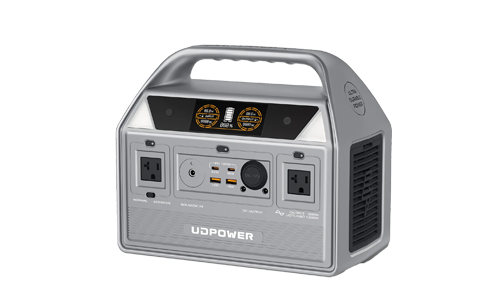What Size Solar Generator Do You Need to Power a House? | Complete Guide with Charts
ZacharyWilliamTable of Contents
- 1. Why Solar Generator Sizing Matters
- 2. What Size Generator Do I Need for My House?
- 3. Factors That Determine Solar Generator Size
- 4. How to Calculate Your Power Needs
- 5. Solar Generator Sizing Chart for Households
- 6. Components of a Solar Generator System
- 7. Runtime and Recharging Considerations
- 8. Tips for Choosing the Right Solar Generator
- 9. Common Mistakes to Avoid
- 10. FAQs
1. Why Solar Generator Sizing Matters
Sizing a solar generator correctly is crucial—not just to keep your lights on, but to ensure long-term reliability, battery health, and energy efficiency. Unlike fuel-powered generators, solar generators rely entirely on stored energy (battery) and the variable availability of sunlight. That means there’s less room for error when it comes to capacity planning.
Insufficient Battery = Power Shortages
If your solar generator is too small, you may run out of power during the night, on cloudy days, or when running appliances longer than expected. For example, a fridge alone can consume 1,200Wh per day, which would drain a 1,000Wh solar generator prematurely—leaving no reserve for lights, fans, or phones.
Oversized System = Higher Costs & Waste
On the flip side, oversizing your generator—buying a 5kWh system when you only use 500Wh per day—can lead to higher upfront costs and underused resources. You might end up with heavy, expensive gear that takes up space but never operates at full efficiency.
Solar Charging Adds Another Layer
Unlike gasoline generators that can be refueled on demand, solar generators depend on sunshine to recharge. If your solar panel input is too small, even a large battery can become useless when you can’t refill it fast enough. This makes proper sizing of both battery capacity and solar input (W) essential for energy independence.
Appliance Compatibility Requires Inverter Sizing
Even if your battery has enough energy, your generator’s inverter must support the peak power draw of your appliances. For example, a microwave might require 1,200W surge power. If your inverter is only 1,000W, the generator will shut down or fail to start the appliance. This is why both storage capacity and inverter rating must be aligned with your usage patterns.
Right-Sized = Efficient, Long-Lasting, Cost-Effective
- Ensures full-day and overnight operation without interruption
- Protects lithium batteries from over-discharge and extends lifespan
- Maximizes daily solar charging efficiency (ideal input-to-output balance)
- Prevents costly overinvestment in capacity you don’t use
In short, solar generator sizing isn’t just about powering your home—it’s about finding the perfect match between your energy needs, your environment, and your expectations. A well-sized solar generator gives you reliable backup, peace of mind, and a system you can depend on—rain or shine.
2. What Size Solar Generator Do I Need for My House?
Choosing the right solar generator for your home depends on how much power you need and how long you need to stay powered—especially during outages or off-grid situations. Unlike fuel generators, solar generators store energy in batteries (measured in watt-hours or kilowatt-hours) and recharge through solar panels, making sizing more dependent on energy capacity than just output wattage.

What Size Solar Generator Do I Need: Based on Home Size
Larger homes generally have more appliances and lighting, resulting in greater daily energy consumption. Below is a general estimate of solar generator battery capacity based on home size and typical usage patterns:
| Home Size (sq ft) | Recommended Battery Capacity | Suggested Inverter Size | Solar Input for Daily Recharge |
|---|---|---|---|
| 1,000 – 1,500 sq ft | 2 – 4 kWh | 1,500 – 2,000 W | 400 – 600 W |
| 1,500 – 2,000 sq ft | 4 – 6 kWh | 2,000 – 3,000 W | 600 – 1,000 W |
| 2,000 – 3,000 sq ft | 6 – 10 kWh | 3,000 – 4,000 W | 1,000 – 1,500 W |
| 3,000+ sq ft | 10+ kWh | 4,000 – 5,000 W | 1,500+ W |
Note: These estimates assume moderate use (refrigerator, lights, fans, TV, router) for up to 12–24 hours. If you plan to run high-wattage devices (e.g. air conditioners, well pumps), increase battery and inverter size accordingly.
What Size Solar Generator Do I Need: Based on Household Size
The number of people in your home affects how many devices are used simultaneously. Here’s a rough estimate of the system size needed based on household occupancy:
| Household Size | Recommended Battery Capacity | Recommended Solar Input |
|---|---|---|
| 2 – 3 people | 2 – 4 kWh | 400 – 600 W |
| 4 – 5 people | 4 – 6 kWh | 600 – 1,000 W |
| 6+ people | 6 – 10+ kWh | 1,000 – 1,500 W |
Example: A family of four in a 1,600 sq ft home may require a solar generator with a 5 kWh lithium battery, a 2,000W inverter, and 800W of solar input to reliably power basic needs (fridge, lights, devices) for 12–24 hours with daily recharge.
To refine your estimate, we recommend using these tools:
Related Reading: The True Cost of Installing a Solar System for a 2,000 Sq. Ft. Home
3. Factors That Determine Solar Generator Size
Unlike traditional fuel generators that can be "refueled" on demand, solar generators must be carefully sized based on both your energy consumption and your ability to recharge from solar power. Several critical factors influence the size of solar generator you’ll need:
1. Daily Energy Consumption (Watt-Hours or kWh)
This is the most important factor. Add up the total amount of electricity your essential appliances and devices consume in a 24-hour period. For example:
- Refrigerator: ~1,200 Wh/day
- Wi-Fi Router: ~150 Wh/day
- LED Lights: ~200 Wh/day (for 4–5 bulbs)
- Laptop: ~300 Wh/day
If your daily usage totals 2,500 Wh (2.5 kWh), your solar generator battery capacity should be at least that—preferably 20–30% more to avoid deep discharges.
2. Peak Load Requirements (Inverter Capacity)
Some devices require a high surge of power when starting (like refrigerators or pumps). Even if your battery has enough energy, the inverter must be rated to deliver sufficient continuous and surge power in watts. For example:
- Microwave: 1,200W running
- Refrigerator: 200W running, but 800–1,000W startup
Make sure the inverter output matches or exceeds your simultaneous load requirements, or the system will shut down or fail to start those appliances.
3. Runtime Expectations
Do you need backup for just a few hours, overnight, or for multiple days off-grid? Your desired runtime directly determines how much battery storage you need. A 1,000Wh generator may power a few lights and a router overnight, but you'll need 3,000–5,000Wh or more to run essential household items through an extended blackout.
4. Solar Charging Speed and Panel Input
The generator’s input capacity defines how quickly you can recharge its battery using solar panels. If your panels can’t replenish what you consume each day, your battery will gradually drain. For example:
- 400W of panels × 5 sun hours = 2,000Wh/day
- To recharge a 3,000Wh battery fully, you’d need at least 600W of solar input under the same conditions.
Look for systems with MPPT (Maximum Power Point Tracking) charge controllers for faster and more efficient solar recharging.
5. Geographic Location and Peak Sun Hours
Where you live matters. In Arizona or California, you might get 5–6 peak solar hours per day. In cloudy regions like Seattle or New York, you might only get 2–4 hours. This affects how fast and how fully you can recharge your generator using solar panels.
6. Type and Number of Appliances
The more devices you want to run—and the more power-hungry they are—the larger your system must be. High-demand items like electric kettles, space heaters, AC units, or induction cooktops typically aren't suited for small solar generators unless you have a large battery bank and a high-wattage inverter.
7. Future Expansion Plans
If you plan to add more solar panels or increase your backup load in the future (like adding a mini-split AC or upgrading to a larger refrigerator), choose a solar generator that supports expandable batteries and has high solar input compatibility.
8. Battery Chemistry and Efficiency
Lithium iron phosphate (LiFePO4) batteries offer higher cycle life, better efficiency, and deeper discharge capabilities compared to older lead-acid systems. A 3,000Wh LiFePO4 battery can provide more usable energy than a similarly sized AGM battery.
Conclusion: A properly sized solar generator considers not just how much energy you need, but how fast you can recharge it and how your appliances behave. Underestimating any of these factors can lead to power interruptions, while overestimating may increase your costs unnecessarily.
4. How to Calculate Your Power Needs
Calculating your power needs is the most important step when choosing a solar generator. Unlike traditional generators that can simply be refueled, solar systems depend on correctly matched battery capacity and solar input. The goal is to generate and store enough power to match your consumption—and to do it sustainably each day.
Step 1: List All Devices You Want to Power
Start by identifying the essential appliances and electronics you plan to use during a power outage or off-grid period. Common examples include:
- Refrigerator or freezer
- Wi-Fi router
- LED lights
- Laptop or phone charger
- Microwave or induction cooker
- Electric fan or portable heater
Step 2: Find Each Item’s Wattage
Check the labels on your appliances or search online to find their rated wattage. Be sure to distinguish between:
- Running watts: the amount of power required to keep the appliance running
- Starting (surge) watts: the brief spike of power needed to turn on certain appliances like refrigerators or pumps
Use the higher surge wattage figure when calculating inverter size, and running wattage for daily energy usage.
Step 3: Calculate Daily Energy Use (in Watt-Hours)
To estimate how much energy a device uses per day, use this formula:
Device Wattage × Hours Used Per Day = Daily Energy Consumption (Wh)Example: A 100W fan used for 5 hours per day → 100W × 5h = 500Wh
Do this for every device, then add the total watt-hours to determine your estimated daily usage.
Step 4: Determine Battery Capacity Needed
Now that you know how much power you need daily, your solar generator should have a battery capacity (in Wh or kWh) that can support that load. Always include a safety buffer of 20–30% to avoid deep battery discharge and allow for cloudy days.
Example: If your total load is 2,000Wh/day, choose a generator with at least 2,500–3,000Wh battery capacity.
Step 5: Choose an Inverter That Matches Peak Load
The inverter is responsible for delivering AC power to your appliances. Make sure its continuous power rating exceeds your highest expected combined load. Also ensure it can handle the surge wattage of startup appliances like refrigerators.
Example: If your devices run simultaneously at 1,200W, choose a 1,500W+ inverter with at least 2,000W surge support.
Step 6: Estimate Solar Panel Input Needed
To recharge your battery daily, your solar panels must produce at least as much energy as you consume. Use this simple guide:
Battery Capacity ÷ Peak Sun Hours = Required Solar Input (W)Example: 3,000Wh battery ÷ 5 hours = 600W of solar panel input
This ensures your system is “solar sustainable,” meaning it can recharge from the sun in one day what you use in one day.
Step 7: Use Online Tools for Accuracy
For faster results, use these free tools to make the process easier and more precise:
- Portable Power Station Runtime Calculator – Helps estimate how long a solar generator will run your selected devices.
- Battery Unit Conversion Tools – Convert mAh, Ah, Wh, and kWh as needed.
Final Tip:
Always size for your : cloudy weather, longer outages, or nighttime usage. A slightly larger system is better than one that leaves you powerless when you need it most.
For ease, try our Runtime Calculator or use the Unit Conversion Tool to convert mAh, Ah, Wh, and kWh.
5. Solar Generator Sizing Chart for Households
Now that you understand how to calculate your power needs, use the chart below to estimate the right solar generator size based on different usage scenarios. This includes the battery capacity (in watt-hours or kilowatt-hours), inverter output (watts), and solar input required for daily recharge.
The chart assumes a typical energy usage pattern and is designed to guide homeowners in selecting a system that meets their runtime expectations.
| Usage Scenario | Typical Appliances | Battery Capacity | Inverter Size | Solar Input | Estimated Runtime |
|---|---|---|---|---|---|
| Basic Emergency Use | LED lights, phone charger, Wi-Fi router | 500 – 1,000 Wh | 300 – 500 W | 100 – 200 W | 6 – 12 hrs |
| Light Backup for Small Home | Fridge, lights, router, fan | 1,000 – 2,500 Wh | 500 – 1,000 W | 200 – 400 W | 12 – 24 hrs |
| Essential Daily Use | Fridge, lights, laptop, TV, microwave (brief use) | 2,500 – 5,000 Wh | 1,500 – 2,000 W | 400 – 800 W | 24 – 36 hrs (moderate load) |
| Whole-House Light Load | Fridge, lights, TV, washer, multiple fans | 5,000 – 10,000 Wh | 2,000 – 3,000 W | 800 – 1,200 W | 1 – 2 days |
| Whole-House + High Demand | All essentials + well pump, window AC, or small heater | 10,000 – 15,000 Wh+ | 3,000 – 5,000 W | 1,200 W+ | Up to 24 hrs (depending on load) |
Note: Runtime is approximate and depends on usage patterns and available sunlight for recharging. Always oversize slightly to account for cloudy days or overnight needs.
How to Use This Chart
- Start by identifying your usage scenario from the first column.
- Verify that the inverter size supports your highest-wattage appliances.
- Ensure the battery capacity meets your total daily usage (plus 20–30% buffer).
- Confirm that your solar input can fully recharge your battery in one day (based on 4–6 peak sun hours).
Example
If you want to power a 100W fridge, 100W of lighting, a 50W fan, and a few low-wattage electronics for 12 hours a day, that totals roughly:
- Fridge: 100W × 12h = 1,200 Wh
- Lights: 100W × 6h = 600 Wh
- Fan: 50W × 8h = 400 Wh
- Others: 300 Wh
Total: ~2,500 Wh/day → You should choose a solar generator with at least a 3,000Wh battery, a 1,000W inverter, and 400–600W of solar input for daily recharge.
Use the Runtime Calculator to fine-tune this based on your own appliance list.
6. Components of a Solar Generator System
Understanding the components of a solar generator system is essential before making a purchase. While most solar generators appear to be “all-in-one boxes,” each part inside plays a crucial role in how efficiently and safely the system stores and delivers power. Here's a breakdown of the key elements you should evaluate:
1. Battery (Energy Storage Unit)
The battery is the heart of any solar generator. It stores energy collected from solar panels and makes it available for use when needed—especially at night or during grid outages. Battery capacity is measured in watt-hours (Wh) or kilowatt-hours (kWh).
- Common Types: Lithium Iron Phosphate (LiFePO₄), Lithium-ion, Lead-Acid (less common in modern systems)
- What to Look For: At least 2,000+ charge cycles, deep discharge capability (80–90%), high energy density
- Rule of Thumb: A 1,000Wh battery can power a 100W load for ~10 hours
2. Inverter (Power Delivery Unit)
The inverter converts the stored DC (direct current) energy from the battery into usable AC (alternating current) power for your household appliances. Inverter size determines how many watts the generator can deliver at once.
- Continuous Output: The stable power level the inverter can support (e.g., 2,000W)
- Surge Rating: Short-term capacity to start devices with high startup loads (e.g., 4,000W surge for 1–2 seconds)
- What to Look For: Pure sine wave inverter (for electronics), high efficiency, good cooling system
3. Solar Charge Controller (MPPT or PWM)
This component regulates the voltage and current from the solar panels before it enters the battery. The best systems use MPPT (Maximum Power Point Tracking) controllers for faster and more efficient solar charging.
- MPPT: Up to 30% more efficient than PWM; ideal for changing sunlight conditions
- PWM: Basic controller, cheaper but less efficient
- What to Look For: Max input voltage (e.g. 60V, 100V+), charge efficiency, panel compatibility
4. Solar Input Port (PV Input Interface)
This is the physical connection where solar panels plug into your generator. The input wattage determines how fast you can recharge the battery each day. Larger systems should support higher solar input—ideally 600W or more.
- Check Compatibility: Ensure your panel voltage and connectors (e.g., MC4) match the generator's input specs
- Look for Expandability: Some models allow chaining multiple panels for faster charging
5. Battery Management System (BMS)
The BMS monitors and protects the battery by regulating charging, discharging, temperature, and voltage. A reliable BMS extends the battery’s lifespan and prevents safety issues like overheating or overcurrent.
- Must-Have Protections: Overcharge, short-circuit, overcurrent, and thermal protection
- Advanced Systems: May include Bluetooth or app-based monitoring features
6. Display and Control Interface
A good solar generator should give you real-time information about battery level, power output, solar input, and estimated runtime. Some models include touchscreen LCDs, while others offer mobile app integration via Bluetooth or Wi-Fi.
- Essential Data: Battery % remaining, input/output wattage, estimated hours left
- Premium Features: App control, smart mode switching, USB-C PD control
7. Output Ports
The more ports and the more variety, the more flexible your generator will be. At a minimum, look for:
- Multiple AC outlets (pure sine wave)
- USB-A and USB-C ports (ideally with fast charging)
- 12V car port or DC5521 for small appliances
- Anderson, XT60, or wireless outputs for niche devices
8. Build Quality and Portability
For outdoor and emergency use, the housing material, weight, and portability features (like wheels or handles) are also important. Rugged designs are better suited for off-grid or mobile environments.
Conclusion
A reliable solar generator is more than just a big battery—it’s an integrated energy system. Make sure each component is sized and engineered to match your lifestyle, expected usage, and expansion needs. Pay close attention to inverter ratings, battery chemistry, and solar input capacity—these three components will define your system’s performance.
7. Runtime and Recharging Considerations
One of the most common questions when choosing a solar generator is: “How long will it run?” The answer depends on several variables, including battery size, load wattage, recharge conditions, and solar panel performance. Understanding these dynamics helps you avoid energy shortfalls and optimize your system for daily use or emergency backup.
Understanding Runtime: The Basic Formula
The simplest way to estimate runtime is to divide the battery capacity by the total load:
Battery Capacity (Wh) ÷ Total Load (W) = Runtime (in hours)Example: A 2,000Wh battery running a 100W fridge, 50W fan, and 50W of lighting (total 200W load):
2,000Wh ÷ 200W = 10 hours of runtime (approx)Keep in mind this assumes 100% efficiency. In real-world conditions, you should factor in 10–15% system loss due to inverter inefficiency, battery reserve, and temperature variation.
Factors That Affect Runtime
- Actual Load Fluctuation: Appliances like refrigerators cycle on and off, so runtime may be longer than simple calculations suggest.
- Battery Chemistry: LiFePO₄ batteries can be discharged more deeply than lead-acid, giving more usable capacity.
- Ambient Temperature: Extreme heat or cold can reduce usable capacity by 10–30%.
- Inverter Efficiency: High-quality pure sine wave inverters lose ~5–10% energy during AC conversion.
- Simultaneous vs Sequential Use: Spreading out usage increases overall runtime versus running multiple devices at once.
Daily Recharge Considerations
Solar generators must replenish what they consume in a typical day to remain sustainable off-grid. That means your solar input must match or exceed your daily load.
Recharge Example
Let’s say you use 2,400Wh per day. With 600W of solar panels and 5 peak sun hours:
600W × 5 hours = 3,000Wh daily solar generationThis setup can fully recharge a 2,400Wh battery in a single sunny day—with a bit of buffer. But if you only have 300W of input or fewer sun hours, it could take 2+ days to fully recharge—causing a “power deficit.”
Peak Sun Hours Vary by Location
“Peak sun hours” refer to the equivalent hours of full solar production. Depending on your region:
- Arizona, California: 5–6 hours/day
- Texas, Florida: 4–5 hours/day
- Pacific Northwest, Northeast: 2–4 hours/day
This greatly affects how fast your generator recharges, especially in cloudy or winter months.
Tips to Maximize Runtime
- Use energy-efficient appliances (LED lights, inverter fridges)
- Stagger usage of heavy loads like microwaves or pumps
- Limit AC usage or switch to DC appliances where possible
- Keep your generator and panels in ventilated, shaded areas to reduce thermal loss
- Add external batteries or parallel generators if supported
Use Tools to Simulate Runtime
To accurately predict how long your solar generator will run your setup, use this tool:
- UDPOWER Runtime Calculator – Plug in your load and battery size to estimate runtime and solar recharge needs.
Conclusion
Runtime and recharge speed are equally important when sizing a solar generator. Always choose a battery large enough to meet your daily needs with at least 20% extra capacity, and match it with sufficient solar input based on your region’s available sunlight. Proper sizing ensures your system will keep up with your usage—not just for a few hours, but indefinitely.
8. Tips for Choosing the Right Solar Generator
Selecting the right solar generator isn’t just about picking the largest battery or highest wattage—it’s about matching your unique energy needs with the system’s capabilities, efficiency, and flexibility. Below are practical, brand-neutral tips to help you make the best decision:
1. Know Your Load Before You Shop
Start with a list of essential devices you plan to power. Consider their wattage and daily usage time to determine your total energy demand in watt-hours (Wh). Don't forget to factor in peak wattage if multiple appliances will run simultaneously.
2. Choose Battery Capacity That Covers At Least 1 Full Day of Use
As a general rule, the battery should have 20–30% more capacity than your daily energy consumption to ensure reliable performance and compensate for inefficiencies or cloudy days.
Example: If you use 2,000Wh per day, look for a generator with at least 2,500–3,000Wh of battery capacity.
3. Match the Inverter Size to Your Highest-Powered Device
The inverter determines how much power the generator can deliver at once. Make sure its continuous output rating covers the most demanding appliance you intend to run—plus any additional devices you may run at the same time. Also verify that the surge power rating can handle devices with startup spikes like refrigerators or power tools.
4. Look for High-Efficiency MPPT Solar Charging
An efficient MPPT (Maximum Power Point Tracking) charge controller enables faster, smarter solar charging—especially during varying sunlight conditions. Ensure the generator supports enough solar input (in watts and voltage) to fully recharge the battery in one day under typical sun conditions.
5. Prioritize Lithium Iron Phosphate (LiFePO₄) Batteries
If possible, opt for solar generators with LiFePO₄ battery chemistry. These offer longer cycle life, better thermal stability, and safer performance under heavy usage compared to other lithium or sealed lead-acid options.
6. Verify Input/Output Port Compatibility
Check whether the generator includes the types and number of ports you need. Look for multiple AC outlets, USB-A/USB-C ports, 12V DC sockets, and solar charging input that matches your panel connectors (e.g., MC4, XT60).
7. Portability and Weight Matter—Plan Accordingly
Some high-capacity generators weigh 50–100 pounds or more. If you plan to use the system for RVs, camping, or mobile backup, make sure it includes wheels, handles, or modular battery packs for easier transport.
8. Evaluate Display and Monitoring Features
A good solar generator should clearly display key metrics such as input/output wattage, battery percentage, estimated runtime, and error warnings. Systems with app monitoring can provide added convenience for remote tracking.
9. Consider Expandability
If you anticipate growing energy needs, look for systems that allow:
- Adding extra battery packs
- Connecting additional solar panels (parallel or series)
- Optional DC or AC expansion modules
Expandable designs help extend system life and reduce the need to replace the entire generator in the future.
10. Check Safety and Protection Systems
Ensure the solar generator has a robust Battery Management System (BMS) with protections for:
- Overcharging
- Overheating
- Overcurrent
- Short circuits
- Low temperature charging lockout (especially for lithium batteries)
11. Balance Performance, Size, and Budget
While it's tempting to go for the biggest system available, choose the right size for your actual needs. Oversizing may add unnecessary weight and cost. Undersizing will lead to frustration, power shortages, and potential equipment damage.
Final Tip
Use energy-efficient appliances whenever possible to reduce your generator size and extend runtime. LED lights, inverter fridges, and laptops consume much less power than older or less efficient devices.
9. Common Mistakes to Avoid
Even with the best intentions, many first-time solar generator buyers make critical mistakes that lead to power shortages, device incompatibility, or unnecessary expenses. Avoiding these common pitfalls will help you get the most out of your investment and ensure reliable performance during outages or off-grid use.
1. Underestimating Daily Power Consumption
A frequent mistake is focusing only on the wattage of a single appliance rather than calculating total daily energy usage in watt-hours. For example, a refrigerator may run at only 100W, but over 24 hours, it can consume more than 1,200Wh. Always add up the wattage × hours used for each device to get a complete picture.
2. Choosing Battery Capacity That’s Too Small
Some users opt for smaller, cheaper systems that can’t meet their runtime needs. If your generator runs out of power overnight, it may not recharge fully the next day—especially in cloudy weather. Always oversize your battery capacity by 20–30% to allow for real-world conditions and inefficiencies.
3. Ignoring Inverter Output Limits
Even if your battery is large enough, the inverter must be able to deliver sufficient continuous and surge power for your devices. For example, trying to run a microwave (1,200W) on a 1,000W inverter will fail. Always check both continuous and peak (surge) watt ratings before buying.
4. Not Matching Solar Input to Daily Usage
A powerful battery is only helpful if you can recharge it. If your solar input is too low, the battery may never fully recover each day. For daily off-grid use, size your solar input (in watts) to match or exceed your daily usage divided by local peak sun hours.
5. Overloading with Too Many Devices
Trying to power everything at once—especially high-wattage appliances—can overload the inverter or rapidly deplete the battery. Instead, prioritize essential loads and stagger device use when possible.
6. Using Incompatible Solar Panels or Cables
Not all solar panels or connectors are compatible with all generators. Mismatched voltage ranges, amperage limits, or plug types (e.g., MC4 vs XT60) can prevent charging or even damage your system. Always verify compatibility before connecting third-party panels.
7. Charging and Discharging in Extreme Temperatures
Solar generators have operating temperature ranges. Charging lithium batteries in freezing temperatures can permanently damage them, while extreme heat can reduce capacity and shorten lifespan. Use your generator in shaded, ventilated environments and store indoors in cold climates.
8. Ignoring Battery Management Features
Some users bypass or ignore the system’s built-in protections, or choose models without key features like overcurrent, short-circuit, or temperature protection. Make sure your generator includes a robust Battery Management System (BMS).
9. Relying Only on Grid Charging
Some users never test the solar input or fail to acquire panels, defeating the purpose of having a solar generator. Always set up your solar panels and test charging regularly—even if you primarily use wall charging—so you're prepared when the grid goes down.
10. Assuming All-Watt Ratings Are Equal
Not all "1000W solar generators" perform the same. Some refer to inverter size, some to battery capacity, and some include solar panel ratings. Always check actual specs: battery capacity (Wh), inverter rating (W), and solar input (W and V/A).
11. Forgetting to Maintain or Monitor the System
While solar generators require less maintenance than fuel-based ones, they still benefit from regular checkups. Clean solar panels, monitor charge cycles, inspect cables, and update firmware (if applicable). Proactive care extends system life and ensures peak performance.
12. Buying Without Considering Future Growth
If you plan to add more appliances, go off-grid, or use more solar panels, choose a system that’s expandable. Otherwise, you may end up having to replace the entire unit later instead of simply upgrading parts.
Conclusion
Choosing and using a solar generator effectively isn’t just about buying a big battery—it’s about making smart decisions based on your actual needs, environment, and long-term plans. Avoiding these common mistakes will help you enjoy uninterrupted, safe, and efficient solar power when it matters most.
10. FAQs
Can a solar generator power my refrigerator overnight?
Yes, but it depends on your refrigerator's daily energy use and your battery size. A typical energy-efficient fridge uses 1,000–1,200Wh per day. To keep it running overnight, you'd need at least a 1,500–2,000Wh battery to allow for safe depth of discharge and some buffer.
How many solar panels do I need to charge a solar generator?
This depends on your generator's battery size and local sunlight hours. To recharge a 2,000Wh generator in 5 hours of sunlight, you'd need about 400W of solar input (2,000Wh ÷ 5h = 400W). Always factor in solar panel efficiency losses and controller limitations.
Can I run air conditioning or heaters with a solar generator?
Only if your generator has a high enough inverter output and a large battery. Portable AC units and space heaters typically consume 800–1,500W or more. For reliable use, you'll need at least a 3,000Wh battery and a 2,000–3,000W inverter.
What's the difference between running watts and surge watts?
Running watts are the continuous power needed to operate a device. Surge watts (or peak watts) refer to the short burst of extra power some appliances need to start. Always choose a generator whose inverter can handle both.
Can I use a solar generator while it’s charging from solar panels?
Yes. Most modern solar generators support pass-through charging, meaning you can use the power while the battery is being recharged by solar input. However, the load must not exceed the inverter output or charging input capacity.
Do solar generators work on cloudy or rainy days?
Yes, but charging efficiency will be reduced. On overcast days, solar panels may only produce 10–30% of their rated output. It’s recommended to oversize your solar array and have sufficient battery storage for multi-day coverage.
How long does it take to recharge a solar generator from solar panels?
Recharge time = Battery capacity ÷ (Solar panel wattage × peak sun hours × efficiency rate). For example, a 2,000Wh battery with 400W of panels in 5 sun hours would take ~10 hours with 50% system efficiency, or ~5–6 hours with 80% MPPT charging efficiency.
Can I expand a solar generator system later?
Some models support battery expansion and allow you to connect additional solar panels. Always check whether the system is modular and whether the manufacturer offers expansion ports or compatible external battery modules.
What is the lifespan of a solar generator?
With high-quality lithium batteries (especially LiFePO₄), a solar generator can last 5–10 years or 2,000–4,000+ full charge cycles. Longevity also depends on usage habits, charge depth, and environmental conditions.
Is a solar generator safe to use indoors?
Yes. Solar generators are emission-free, silent, and safe for indoor use. Unlike fuel-based generators, they do not produce carbon monoxide or toxic fumes. Just ensure adequate ventilation to prevent heat buildup when powering high loads.


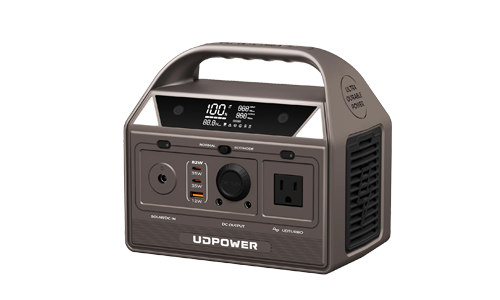
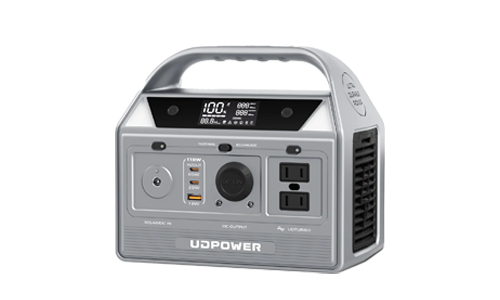
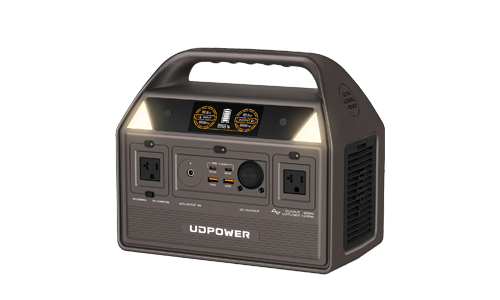
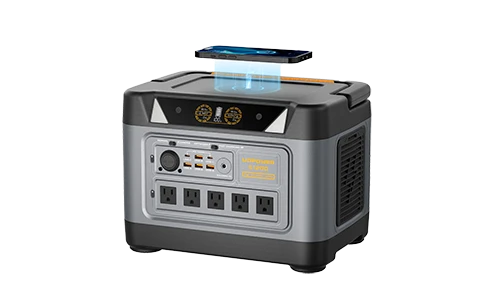
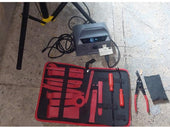

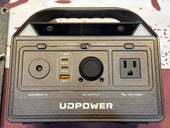
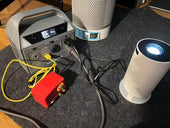
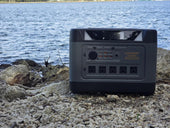
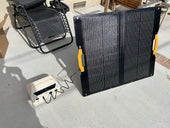






















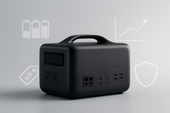

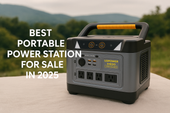





![How to Live In The Woods [Complete Guide]](http://udpwr.com/cdn/shop/articles/Off-Grid_Cabin_Option_f6c94fe7-1ae7-4c3a-baf5-ed9fe684c832.png?v=1763523215&width=170)





